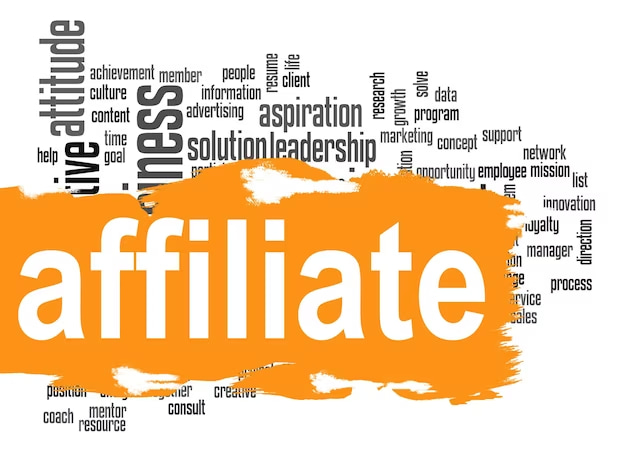In the bustling world of online marketing, mastering the art of affiliate persuasion is the key to transforming casual clicks into lucrative commissions. This skill isn’t just about luck or chance; it’s a strategic blend of psychology, communication, and understanding your audience’s needs. In this comprehensive guide, we’ll delve deep into the realm of affiliate persuasion, exploring the techniques and insights that will help you craft compelling messages, engage your audience, and drive those clicks that ultimately lead to substantial commissions.
Unveiling the Power of Affiliate Persuasion
At its core, affiliate persuasion is about effectively communicating the value and benefits of a product or service to your audience. It’s the art of gently guiding your readers toward taking action, whether it’s making a purchase, signing up for a service, or clicking through to a website. When done skillfully, affiliate persuasion can transform a passive reader into an engaged customer, resulting in those sought-after commissions.
The Psychology of Persuasion
Understanding the psychology behind persuasion is the foundation of success. Robert Cialdini’s principles of persuasion – reciprocity, commitment, social proof, authority, liking, and scarcity – provide a roadmap for crafting persuasive messages that resonate with your audience.
1. Reciprocity: Offer Value First
Begin by offering value to your audience. Provide insightful content, free resources, or valuable advice that establishes goodwill and triggers the principle of reciprocity. When your audience feels they’ve gained something from you, they’re more likely to reciprocate by taking action.
2. Commitment: Encourage Small Steps
Guide your audience towards small commitments. Encourage them to sign up for a newsletter, download a free guide, or participate in a poll. These micro-commitments build a sense of connection and increase the likelihood of them making a larger commitment, such as a purchase.
3. Social Proof: Showcase Success Stories
Humans are inherently influenced by the actions of others. Incorporate social proof by showcasing success stories, testimonials, and user-generated content related to the product you’re promoting. This builds credibility and trust.
4. Authority: Position Yourself as an Expert
Establish yourself as an authority in your niche. Share your expertise through insightful content, expert opinions, and informative guides. People are more likely to be persuaded by individuals they perceive as knowledgeable.
5. Liking: Build Genuine Connections
Forming a genuine connection with your audience is vital. Be relatable, authentic, and likable in your content. When your audience likes and trusts you, they’re more likely to heed your recommendations.
6. Scarcity: Highlight Limited Availability
Create a sense of urgency by highlighting limited availability or time-sensitive offers. Scarcity triggers the fear of missing out (FOMO), motivating readers to take immediate action.
Crafting Compelling Content
The heart of affiliate persuasion lies in crafting content that resonates with your audience and drives them to take action. Here’s how to do it effectively:
1. Know Your Audience Inside Out
Understand your audience’s pain points, desires, and motivations. Craft your message to address their specific needs and challenges.
2. Focus on Benefits
Highlight the benefits and value that the product or service brings to the reader. How will it solve their problems or enhance their lives?
3. Use Persuasive Language
Utilize persuasive language that invokes emotion and paints a vivid picture. Use sensory words and storytelling techniques to draw readers in.
4. Create Compelling Calls to Action (CTAs)
Craft clear and action-oriented CTAs that tell readers exactly what to do next. Make it easy for them to take the desired action.
5. Leverage Visuals
Incorporate visuals such as images, infographics, and videos to enhance the visual appeal of your content. Visuals help break up text and keep readers engaged.
6. Instill Trust and Credibility
Incorporate social proof, authority, and trustworthy sources to instill credibility. When readers trust your recommendations, they’re more likely to click through.
Putting it All into Action: Practical Steps
- Psychology Mastery: Understand the principles of persuasion and apply them strategically.
- Audience Insights: Know your audience’s needs, desires, and motivations.
- Benefit Highlight: Focus on the benefits and value the product/service offers.
- Emotive Language: Use persuasive language and storytelling techniques.
- Clear CTAs: Craft compelling and clear calls to action.
- Visual Enhancement: Utilize visuals to enhance content appeal.
- Trust Building: Incorporate social proof and showcase your expertise.
Conclusion
The art of affiliate persuasion is a potent skill that can turn your affiliate marketing efforts from mundane to magnetic. By understanding the psychology of persuasion, crafting compelling content, and leveraging proven techniques, you can compellingly drive clicks that translate into commissions. Remember, successful affiliate persuasion requires empathy, authenticity, and a genuine desire to serve your audience. As you embark on your journey to master this art, armed with the insights from this guide, you’ll find yourself transforming not just your affiliate marketing results, but also the way you connect with and influence your audience.





